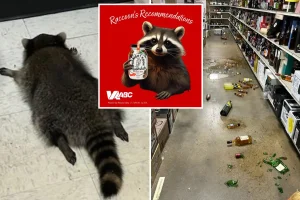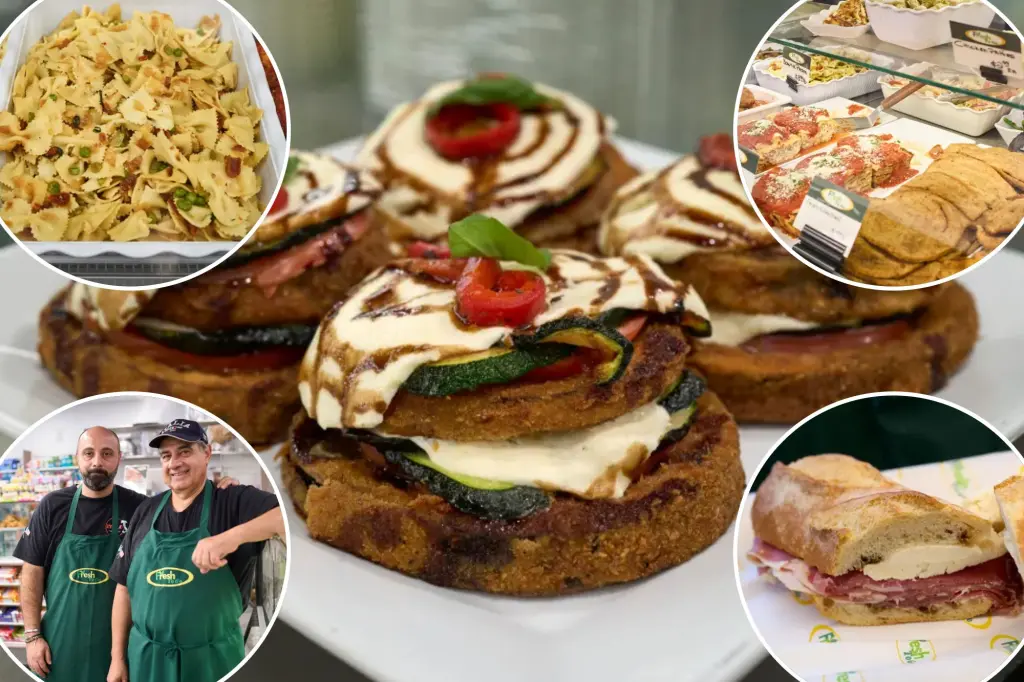A Culinary Renaissance at the Gas Pump: Staten Island’s Hidden Gem
In a corner of Staten Island where Victoria Boulevard meets Seneca Avenue, an unassuming Shell station conceals one of New York City’s most unexpected culinary treasures. From the outside, it blends seamlessly with the borough’s numerous gas stations, but step through the sliding doors and you enter Fresh To Go—an epicurean speakeasy that defies all expectations of gas station fare. The masterminds behind this revolutionary concept are Italo and Gerardo Perito, a father-son duo who have transformed what might otherwise be a typical mini-mart into a celebration of authentic Italian cuisine. Instead of the usual fare of processed snacks and sad, heat lamp-dried pizzas, customers discover scratch-made lasagnas, daily-prepared buffalo mozzarella, and hearty meatballs that would make any Italian grandmother proud. “Most gas stations in the U.S., they don’t have this kind of food,” Gerardo explains with justifiable pride. “We make mozzarella every day.”
The story of Fresh To Go begins with Italo Perito, who immigrated to New York from Salerno, Italy, in 2001. He brought with him more than just dreams—he carried decades of culinary expertise and an old-country work ethic that has him rising at 5:30 each morning to prepare the day’s offerings. The business, which opened earlier this year, draws inspiration from Italy’s renowned Autogrills—roadside establishments where travelers can enjoy restaurant-quality meals in a service station setting. These Italian counterparts offer “a variety of fresh food—they make pizzas, they make fresh sandwiches,” as Gerardo describes. The concept crossed the Atlantic when their landlord’s son-in-law returned from an Italian trip, inspired by the possibility of recreating such an experience in Staten Island. Italo, with over 50 years of restaurant experience spanning two continents, eagerly brought this vision to life, creating what locals have quickly recognized as a culinary destination worth visiting regardless of their fuel gauge.
Despite being open for just four months, Fresh To Go has already cultivated a devoted following in Staten Island’s Italian-American community—a neighborhood where culinary standards are exceptionally high and where subpar Italian food is simply not tolerated. “In four months, we do already start getting regulars, and the regulars come in and they already know what they want,” says Gerardo, who also runs the family’s A&S Pork Store in Staten Island’s West Brighton. The menu features fan-favorite lasagna ($10-$12), perfectly crispy arancini, and mozzarella in carozza—a decadently crunchy Italian grilled cheese made with their fresh dairy ($5). Heroes come stuffed with substantial meatballs crafted from a blend of veal, beef, and pork ($13.95). Even the retail offerings transcend expectations; alongside typical convenience store items, shelves are stocked with imported Italian potato chips, small-batch olive oils, quality dried pasta, and jars of Italo’s signature tomato sauce—creating an atmosphere that feels like a fusion between Eataly and Exxon.
This paradoxical commitment to quality in an unexpected venue represents a broader trend emerging throughout New York City and beyond. Gas station cuisine is having a surprising cultural moment, with several establishments redefining what we might expect from these utilitarian spaces. In Borough Park, the Kosher service station Zoom attracts diverse customers with fresh bagels and lox ($8.99), traditional kugel ($5), and gefilte fish ($4.99). The Bronx boasts Alfredo’s Old-Style Pizzeria, serving freshly made Margherita pizzas and chicken parmigiana sandwiches from a gas station location. Until its recent unexpected closure, Brooklyn’s Blue Hour gained a following for its halal fried chicken sandwiches served from a BP station. Manhattan contributes to the trend with Smacking Burger, a retro smash-burger joint housed in the West Village’s last remaining gas station south of 14th Street—recently recognized as one of the ten best gas station restaurants in America. The owner, Tommy Hondros, told The Post that he sought to recreate “that old-school feeling” of the meat-and-diesel depots that once dotted the urban landscape.
The phenomenon extends well beyond New York’s five boroughs. Just across the Hudson River, convenience chains like Wawa compete for culinary supremacy with extensive menus available via touch-screen ordering. In the Midwest, celebrity chef Andrew Zimmern recently partnered with Iowa-based Casey’s gas stations to promote their barbecue brisket pizza. Zimmern suggests that this trend satisfies “our own sense of adventure” without requiring distant travel: “We don’t have to cross the ocean on a 19th-century tramp steamer to have an adventure. We can walk into some place and try a regional food or a regional treat that happens to be for sale in that particular shop and have just as much of a warm, fuzzy feeling.” This sentiment perfectly captures what the Perito family has created at Fresh To Go—a destination that transforms the mundane act of refueling into an opportunity for culinary discovery.
For Gerardo and Italo, Fresh To Go represents more than just a business venture; it’s a mission to help people get more value—both literal and metaphorical—from their gas station experience. “The people’s first impression outside of the store, they feel like it’s a franchise,” Gerardo observes. “They feel like it’s a Wawa. Once they come in and they see how beautifully the store is done, it really changes their perspective.” This transformation of expectations is at the heart of what makes Fresh To Go so special. In a world of increasing homogenization, where convenience often trumps quality, the Perito family has created something remarkable—a place where the simple act of stopping for gas can lead to an authentic culinary experience that nourishes both body and spirit. They’ve proven that exceptional food can be found in the most unexpected places, and in doing so, they’ve elevated not just gas station dining, but our understanding of what’s possible when passion, tradition, and innovation converge at the corner pump.















